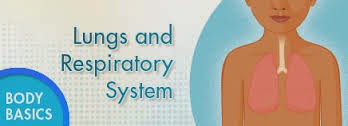
- The nose has a 4 stage filtration system. By breathing into the mouth you go straight to stage 4. This easily results in sore throats, tonsillitis, and even ear infections.
- The more you breathe (hyperventilation) the hungrier you will be and the more acidic the body will become.
- Breathing through the mouth can, over time, create a shrinking of the jaw – hence resulting in crooked teeth (or a relapse after having your braces removed).
- Inhaling through the nose, and exhaling through the mouth messes with the balance of CO2 in the body. This results in a loss of CO2. Holding the breath can increase CO2, which will help to rebalance the PH level.
- We naturally change sides in our sleep approximately every 30 minutes, and this is mostly due to the balancing of the breath through each of the nostrils.
-
Getting up during the night to urinate is most likely due to breathing with the mouth open. Breathing through the mouth causes the bladder to shrink, making one feel as though they need to head to the bathroom pronto!
- The right lung is slightly larger than the left.
- Hairs in the nose help to clean the air we breathe as well as warming it.
- The highest recorded “sneeze speed” is 165 km per hour.
- The surface area of the lungs is roughly the same size as a tennis court.
- The capillaries in the lungs would extend 1,600 kilometres if placed end to end.
- We lose half a litre of water a day through breathing. This is the water vapour we see when we breathe onto the glass.
- A person at rest usually breathes between 12 and 15 times a minute.
- The breathing rate is faster in children and women than in men.
- The respiratory system contains a total of about 1500 miles (2400 km) of airways. The airways begin with the trachea (windpipe), which branches into two bronchi, one going to each lung. The bronchi then divide into thousands of tiny bronchioles within the lungs.
- An adult lung contains 300 million to 500 million tiny air sacs, known as alveoli, at the ends of the bronchioles.
- The lungs are able to float on water since they contain so many air sacs.
- If all the alveoli in both lungs were flattened out, they would have a total area of about 160 square meters – about 80% of the size of a singles tennis court and about 80 times greater than the surface area of an average-sized adult’s skin.
- The interior lining of an alveolus is covered by a thin layer of water, which enables oxygen to move through the wall of the alveolus and into the bloodstream efficiently.
- Water molecules on the lining of an alveolus are attracted to each other, creating a force known as surface tension. When the alveoli become smaller during exhalation, the surface tension increases. This could cause the alveoli to collapse and prevent them from expanding again.
- The lining of alveoli produces a substance called a surfactant. The surfactant reduces the surface tension of water, preventing the alveoli from collapsing.
- The surface of an alveolus is covered with capillaries. Capillaries are narrow blood vessels with a thin wall that is just one cell thick. If all the capillaries in the lungs were placed end to end they would have a length of about 1600 km.
- Like the wall of capillaries, the wall of an alveolus is also just one cell layer thick. This allows for quick absorption of oxygen from the alveoli into the capillaries and the quick release of carbon dioxide from the capillaries into the alveoli.
- A red blood cell contains about 250 million hemoglobin molecules, which carry oxygen through the blood. Each hemoglobin molecule can carry four oxygen molecules. There are 4 million to 6 million red blood cells in each microliter (cubic millimeter) of blood.
- Some people can hold their breath for more than 20 minutes.
- 13th century: Anatomist and physiologist Ibn Al-Nafis advances his theory that the blood must have passed through the pulmonary artery, through the lungs, and back into the heart to be pumped around the body. This is believed by many to be the first scientific description of pulmonary circulation.
- 1986: Cooper performs the first successful double lung transplant.
- Hiccups are caused by various things and occur due to sudden movements in a diaphragm. This is a product of spasms and eating too fast is another cause.
-
”Laughter is the best medicine”, may have some truth. It helps to boost the immune system.
-
When any irritant, like dust particle or pollen, comes in contact with mucus membranes in the nose. The body triggers that foreign substance by sneezing.
-
Guinness World Records lists that Charles Osborne of Anthon, Iowa as a record holder for hiccuping. For 68 years, he hiccuped.
Also, Read:

